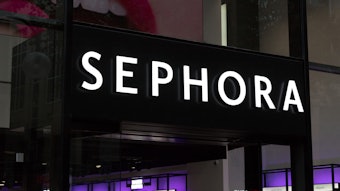
In the beauty market of 2018 and beyond, the brands that will survive will have to forge emotional connections with their consumers, leverage natural and “clean” formulations, foster wellness and increasingly use digital tools and platforms to scale their businesses.
These were the key takeaways from this year’s in-depth beauty industry briefing hosted by CEW in New York City, featuring Sarah Jindal, senior innovation and insight analyst, beauty and personal care, Mintel; Larissa Jensen, executive director, beauty industry analyst, NPD Group; and Jordan Rost, vice president, consumer insights, Nielsen. Additional cited data was derived from Tribe Dynamics.
Read the full series:
- US Prestige Beauty
- The Beauty Consumer
- Beauty Retail
- US Prestige Skin Care
- US Prestige Makeup
- US Prestige Fragrance
- Natural, Sustainable and Clean Beauty
- Beauty for All
While the top 20 cosmetics manufacturers account for about 90% of traditional retail sales, their portion of e-commerce stands at roughly 14%, according to data presented by Jordan Rost, vice president, consumer insights, Nielsen. This is significant because 31% of US beauty care sales last year came from the digital channel, far higher than most leading consumer goods categories such as household, packaged food and health care.
Rost cited the following key market statistics:
- 90%: e-commerce sales growth for cosmetics in 2017
- 29%: e-commerce sales growth for facial cleansers in 2017
- 14%: e-commerce sales growth for hand and body lotion in 2017
E-commerce growth extended well beyond the Amazon behemoth, including consumer brand sites and specialty stores. Growth, according to Rost, was built on both replenishment and discovery.
Discovery & Purchase
As consumers follow increasingly complex omnichannel paths to purchase, it’s more important than ever that brands help consumers along the journey. Small and indie brands have had an advantage in this respect because they’ve built specific audiences based on focused appeals based on lifestyle or values.
“Eye tracking provides a deeper level of insight into what users are thinking about by measuring what they are looking at.”
By bringing the core of a brand down to its essence and building community around that, Rost told Global Cosmetic Industry, players of all sizes can compete effectively and generate positive consumer feedback.
Rost presented data that showed that 97% of top beauty searches are generic, not brand-related, meaning that brands must focus on generating reviews and search result rankings.
Three-click Social Commerce
According to NPD data, 66% of beauty purchases are influenced by social media, with Instagram influencing 75% of user purchase decisions, more than any other platform. This is why earned media value, or EMV, really matters.
Further reading: 6 Ways Social Media Builds Brands.
For instance, said Jensen, citing Tribe Dynamics and NPD data, Anastasia ranked first in EMV and generated 10% sales growth, Too Faced ranked sixth and posted 25% growth, Kiehl’s ranked ninth and reported 14% growth, and Tatcha came in 12th and posted 66% growth last year.
40% of Italian consumers who view beauty content on social media are interested in buying products directly through their feeds.
Data presented by Sarah Jindal, senior innovation and insight analyst, beauty and personal care, Mintel, showed that 40% of Italian consumers who view beauty content on social media are interested in buying products directly through their feeds. To that end, Rost noted that Pinterest now offers shoppable content, which shrinks the consumer path to purchase down to minutes or even seconds.
Jindal noted that social commerce allows brands to capture the sale at the moment through ephemeral content. Instagram is already working with 20 retailers to offer three-click purchases for frictionless shopping, while Snapchat is allowing advertisers to sponsor its 3D World Lenses.
Voice Commerce
According to Nielsen data, 29% of Amazon Echo and 36% of Google Home users have ordered personal care products via voice. Rost explained that consumers will reward brands that deliver the full experience from a quality and convenience standpoint, making smart speakers a key opportunity.
Further reading: Coty gets ready with Alexa.
Rost cautioned, however that technology should be used to scale ideas that have already been tested and have arrived at a solid concept. This ensures the brand remains authentic.
The Near Future: Eye Tracking
In July 2017, ModiFace and Smashbox partnered on an eye tracking service that follows a consumer’s gaze on a screen in order to drive usage, try-ons and customer visits, and, ultimately, increase conversions. The tracking technology can create a heat map of the areas of a screen that received the most attention.
“There are times when users think about a particular shade but would not tap a product or take any action,” said Parham Aarabi, founder and CEO of ModiFace. “Eye tracking provides a deeper level of insight into what users are thinking about by measuring what they are looking at.”
A pilot test with Smashbox revealed that the company’s Always On Liquid Lipstick, which represented 49% of all products focused on by users, was the most popular product, with the most popular shades being Babe Alert, Girl Gang, Miss Conduct and Bawse.
The technology was then used to generate a purchase call to action button for products only when the user tried on and read the name of the product. According to ModiFace and Smashbox, the conversion rate increased from 6.2%, when gaze was not included, to 7.9%, when the call to action button was displayed after the user had finished reading the name of the product as determined by eye gaze—a 27% conversion increase. The technology is expected to roll out live in 2018.
On the Horizon
Looking ahead, Jensen noted that diagnostic tech like wearables and scanners can help consumers track their wellbeing in real time and optimize their behaviors for better outcomes. Specially designed apps could pair consumers with brands that share their values—an increasingly important branding opportunity—while smart tech like eye tracking and other software could potentially create hyper-personalized in-store experiences.










